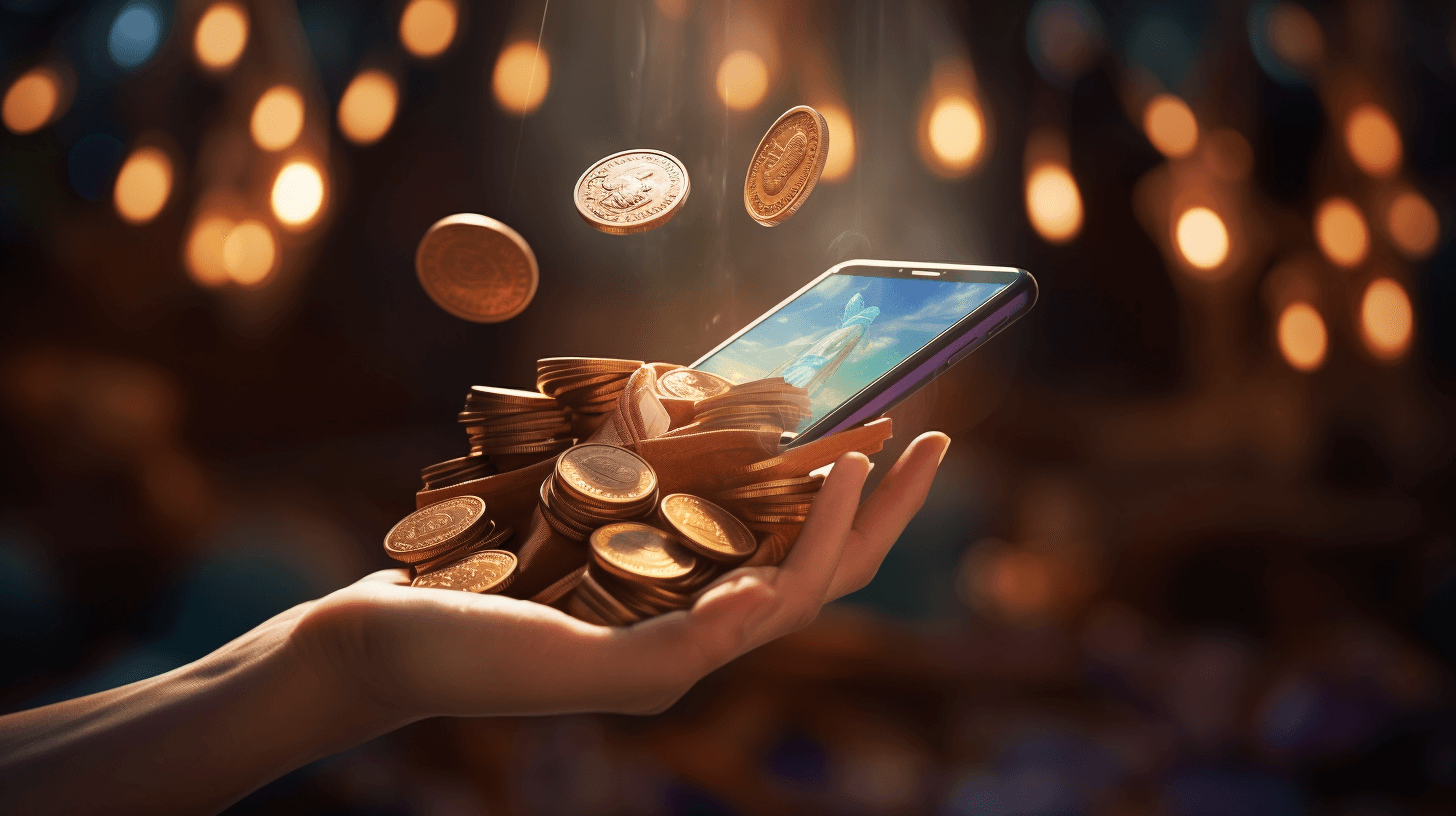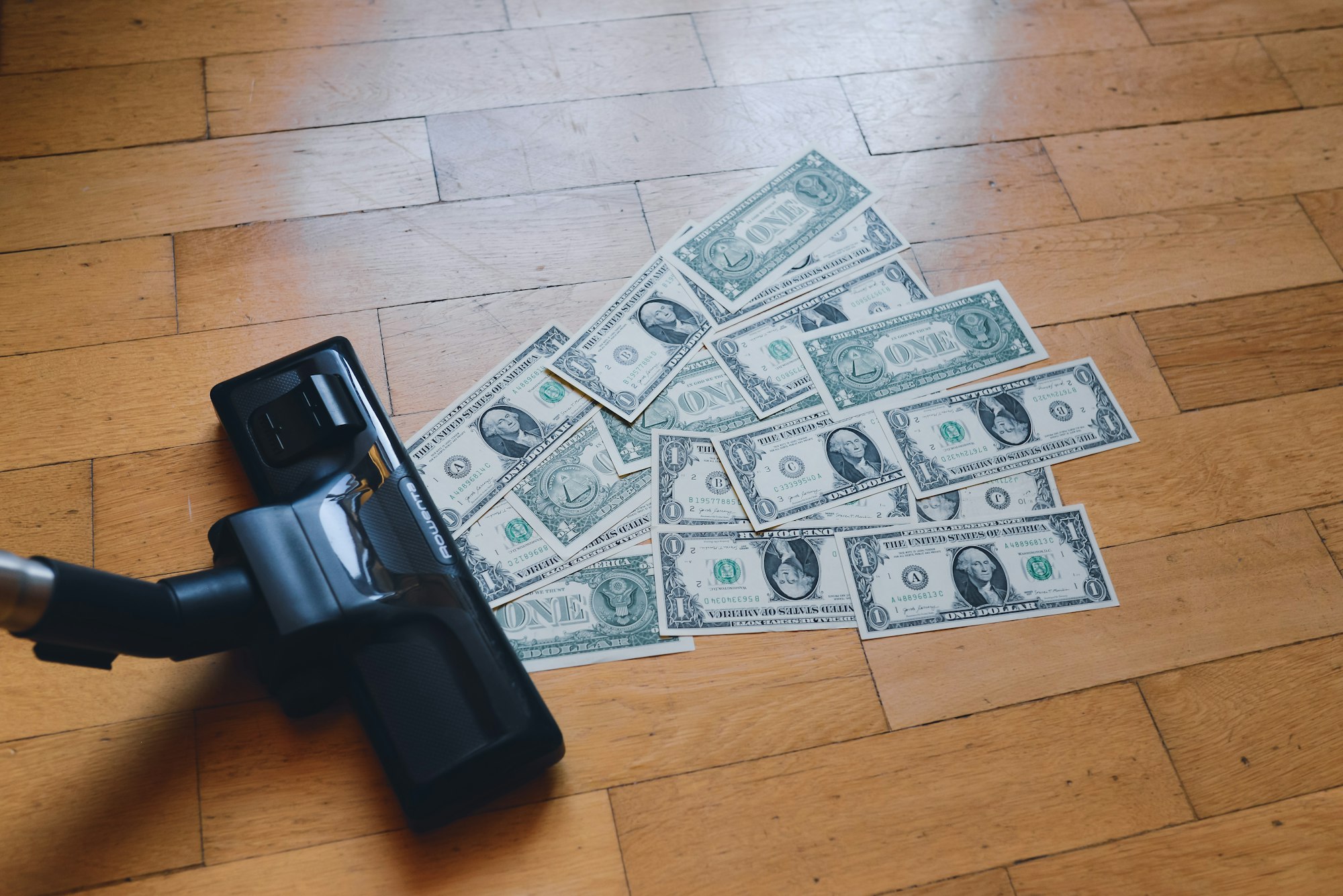Despite what you might hear, loyalty programs do work — but only for businesses that can support them. Just as a brand would put effort into its email marketing or social media management, it needs to commit to continuously improving and optimizing its loyalty program.
And we’re not just talking about paid memberships—that’s a different business model for a different type of business (and a different type of loyalty). Almost every brand can benefit from a traditional points program, if they configure it effectively.
Traditional points reward programs are those where customers earn points for actions like making purchases, social engagement, or celebrating a birthday. They can then cash in those points for discounts, products, and experiences.
It’s easy for us to say they work, but what does the data say?
And we don’t mean the “industry data” that references a blog, linked from an infographic, that quotes an article, that references a 2001 study. We’re talking about real, current, 2023 numbers from a sizable dataset.
Why trust smile loyalty data?
Smile has been in the loyalty game for nearly a decade, and we’ve been able to collect a substantial amount of data since then. When we present the data, we’re not skewing the numbers or hand-picking the best programs to highlight — that wouldn't help anyone. No, we’re looking at a complete data set.
- Stores running on Shopify, BigCommerce, and Wix
- Over 700 million shoppers
- Over 800 million points transactions (earning or redeeming)
- 1.2 billion orders
One important thing to notice with those numbers is since merchants can choose to only reward shoppers with accounts and do things like exclude certain products or collections, we have data from orders that both did and didn’t include Smile points being earned or Smile generated coupons being used.
The sheer amount of data, combined with our ability to analyze orders that Smile influenced and didn’t influence, means that the validity of these numbers is night-and-day better than the typically cited, decade-old, sourceless retention statistics.
What about loyalty programs are people questioning?
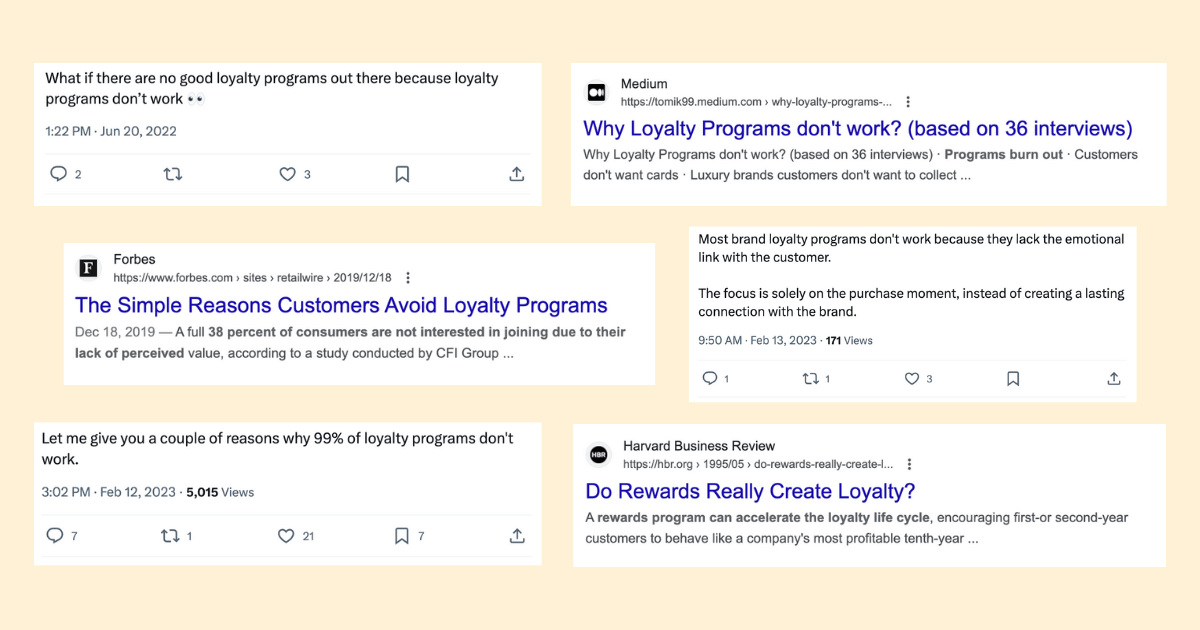
As with any marketing or business strategy, there will be critics. People question if loyalty programs build authentic loyalty or if they’re merely a transactional sales tactic.
But there are two main issues folks have with loyalty programs (and often ecommerce tools in general):
- They claim attribution and influence on every order to bolster their ROI.
- They only motivate shoppers who are going to come back anyway.
So how can we answer those things using modern data?
Issue 1: Claiming attribution and influence on every order
This myth is the easiest to debunk.
In our dataset and analysis, Smile only claims loyalty program attribution for orders where both:
- A Smile coupon was used on the order
- It is not the first order by that customer
So for Smile to claim attribution or influence, shoppers must meet all of these requirements:
- They didn’t just get referred by someone and use a coupon on their first order
- They spent or accumulated enough points to earn a reward
- They redeemed their banked points for a coupon reward
- They used the coupon on the order (meaning no other coupon was used)
This eliminates all of those programs where customers can redeem a reward before even placing an order or those with a first-time shopper referral discount. By setting these parameters, we can be confident that our definition of Smile-influenced sales is accurate.
Issue 2: Do loyalty programs motivate shoppers who were going to come back anyway?
When we’ve set the criteria for what defines a Loyalty Program-influenced repeat purchase, it lets us do some fun things with the data by looking at all of the other repeat purchases made.
We can review most of the data side-by-side by comparing:
- Orders that Smile influenced using the above criteria
- Orders that had a coupon, but NOT a Smile coupon
- Orders that had no coupon at all
By comparing all 3 of these datasets, we can confidently determine whether the repeat purchase and overall retention were caused by the loyalty program specifically or by simply having any discount code.
If all a customer was doing was coming back to place ANY order, they would either
- Pay full price (no coupon), OR
- Find a public discount code from a sale, coupon site, OR
- Hold off until there was a (non-Smile coupon related) promotion offered.
So Smile only claims influence or attribution where the loyalty discount was the best option for the shoppers—meaning the loyalty program drove the repeat purchase.
Smile’s loyalty and rewards program findings
So now that debunked some of the common “issues” people have with loyalty programs, it’s time to answer the million-dollar question.
Do points loyalty programs really work?
The sole purpose of a loyalty program is to turn one-time customers into repeat customers which in turn, improves profitability.
So to determine how effective traditional loyalty programs are we’re going to look at 4 key retention metrics that affect profitability:
- Average Order Value.
- Purchase Frequency.
- Time Between Purchases.
- Repeat Purchase Rate.
Average Order Value (AOV) increases

One of the main ways to improve your ecommerce store’s profitability is by increasing average order value (AOV). That’s because AOV measures the average dollar amount that is spent per order at your store.
The math is simple—if customers spend more per order, you make more per order.
With a traditional discount code (sales, welcome discounts, etc…), customers have little to no incentive to increase their order size. They’ll receive the same discount no matter what they spend—especially if it is a fixed amount-based discount such as a flat $5 off coupon.
With a loyalty discount, customers receive the immediate saving benefit that they would get with any discount. But what sweetens the deal even more is that they are simultaneously earning more points to bring them closer to their next reward. A traditional discount code offers a one-time limited benefit, but participating in a points program offers a continuous loop of earning and redeeming value.
How many times have you spent more than you normally would when you have a coupon code? Or perhaps you don’t shop at all unless you are receiving a discount.
It’s no surprise that customers who are redeeming discounts through Smile loyalty coupons are spending more per order than those who are paying full price.
Why should you care?
If you want to improve profits, improving your AOV is a crucial step. Points programs encourage customers to spend more to get closer to their next redemption level and reward.
Purchase Frequency (number of orders in 365 days) increases
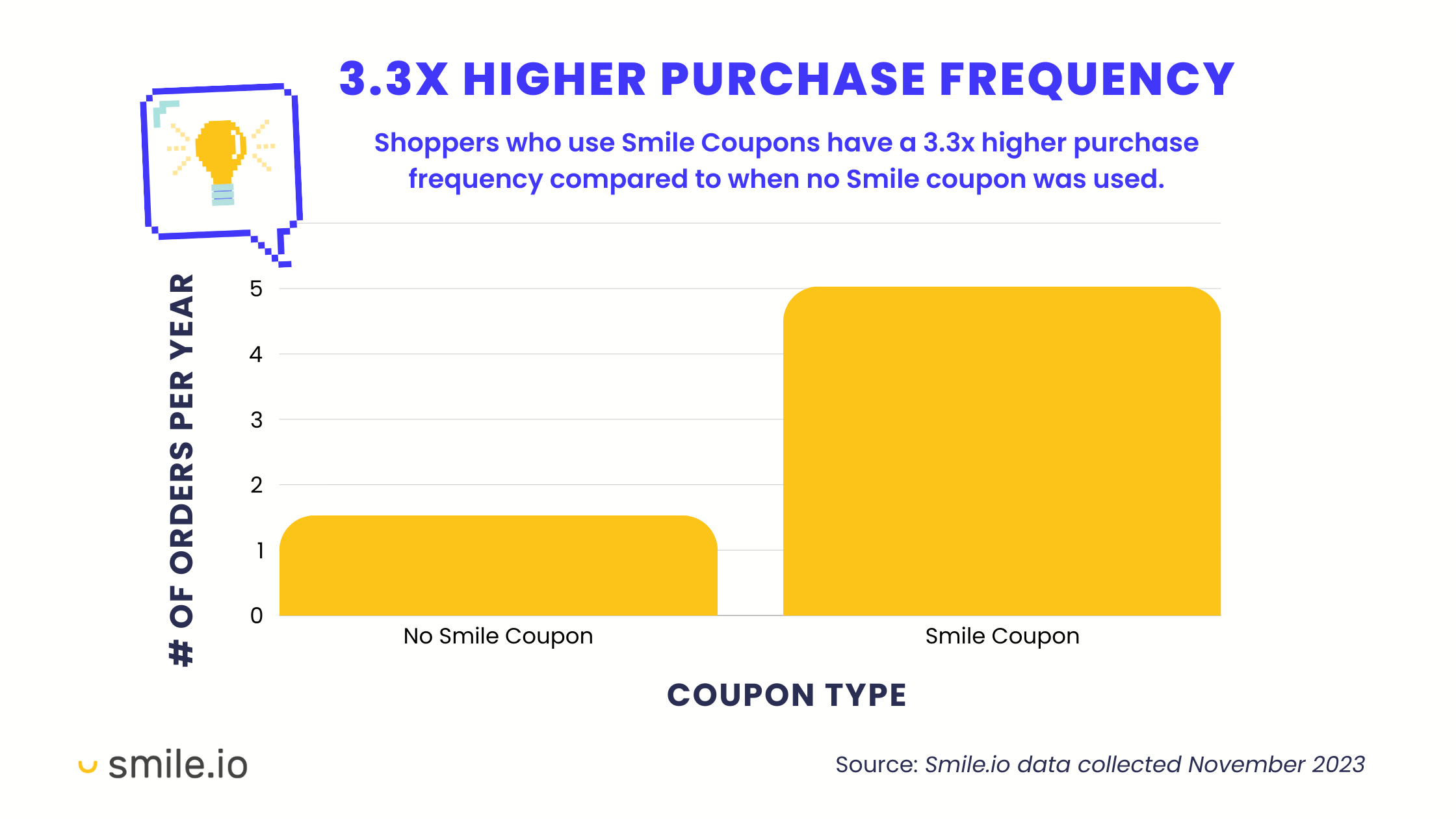
If increasing AOV is one way to increase profitability, the other major factor is increasing your average purchase frequency. When customers shop more often, they’re spending more, and you’re making more.
When customers are not using any discounts on their purchases, they’re either making their decision based on brand reputation or price. And if they’re price-conscious, that just means they’re looking for great value. This is where points can play a role.

Points programs are a great switching barrier in competitive industries. Let’s consider an industry with a characteristically high purchase frequency like beauty and cosmetics. If your store offers the same or similar products as a competitor, how do you ensure a customer chooses to buy from you? No surprises here—the answer is points.
When a customer already has a point balance built up with you, they’re going to opt for your brand because they can either redeem a reward on their next purchase or earn more points to get rewarded the next time. If they’re shopping for a product that they’re going to buy at regular intervals anyway, like skincare or makeup, a points program ensures that they choose you every time. This increases their purchase frequency by ensuring they shop from you every time instead of switching from brand to brand based on the lowest price available.
Why should you care?
Increasing purchase frequency increases your overall profitability since repeat customers are easier to sell to than first-time customers.
Time Between First and Second Purchases decreases
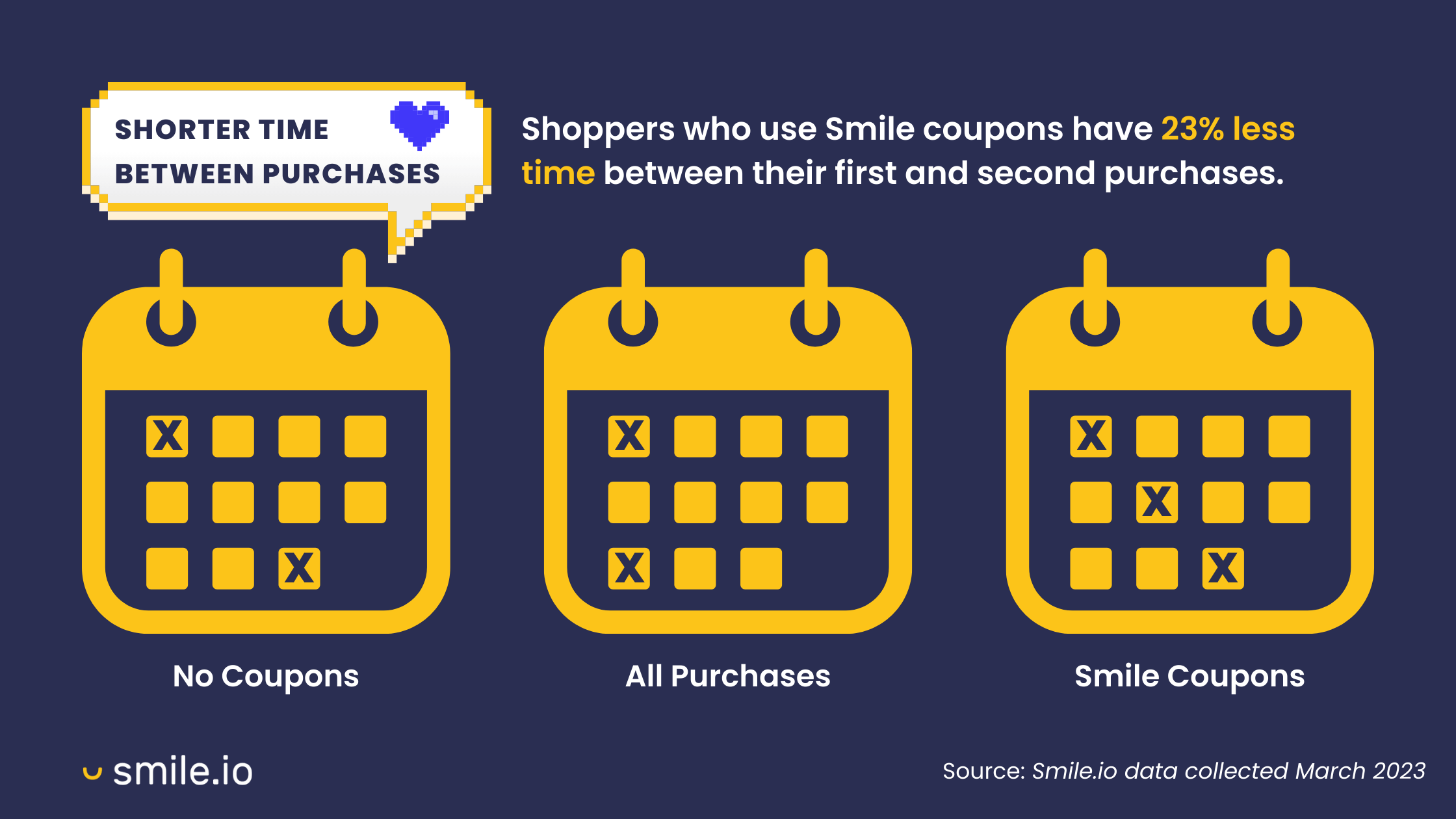
This next metric goes hand in hand with purchase frequency. The time between first and second purchases is exactly what it sounds like—the number of days a customer waits after making their first purchase to return for a second one. With a lower time between purchases, purchase frequency improves.
Points programs are a great motivator in getting customers to make that second purchase—when they’re configured correctly. This all boils down to what you value your first reward at and how easy or hard it is to reach.
Smile recommends setting your first redemption level just above the total number of points a customer can earn without making a purchase. This includes any sign-up bonus points and social media engagement points. This way a customer will most likely be able to redeem a reward on their second purchase, after earning enough points from their first purchase.
When customers use no discount or a non-Smile one-time discount, they’ve already reaped the benefit from that interaction. They won’t be motivated to return for another purchase until they need another product, and in some industries that can be quite a while.
Points programs can help speed up the process. If a customer knows they have a reward waiting to be redeemed, it offers the motivation they need to start browning your store again. Even better if you send post-purchase emails with points balance reminders, keeping that reward top-of-mind.
Why should you care?
When customers wait too long in between purchases, it’s more likely that they’ll become dormant. This makes them harder to sell to, more likely to forget your brand, and more likely to abandon your store completely for a competitor.
Repeat Purchase Rate increases
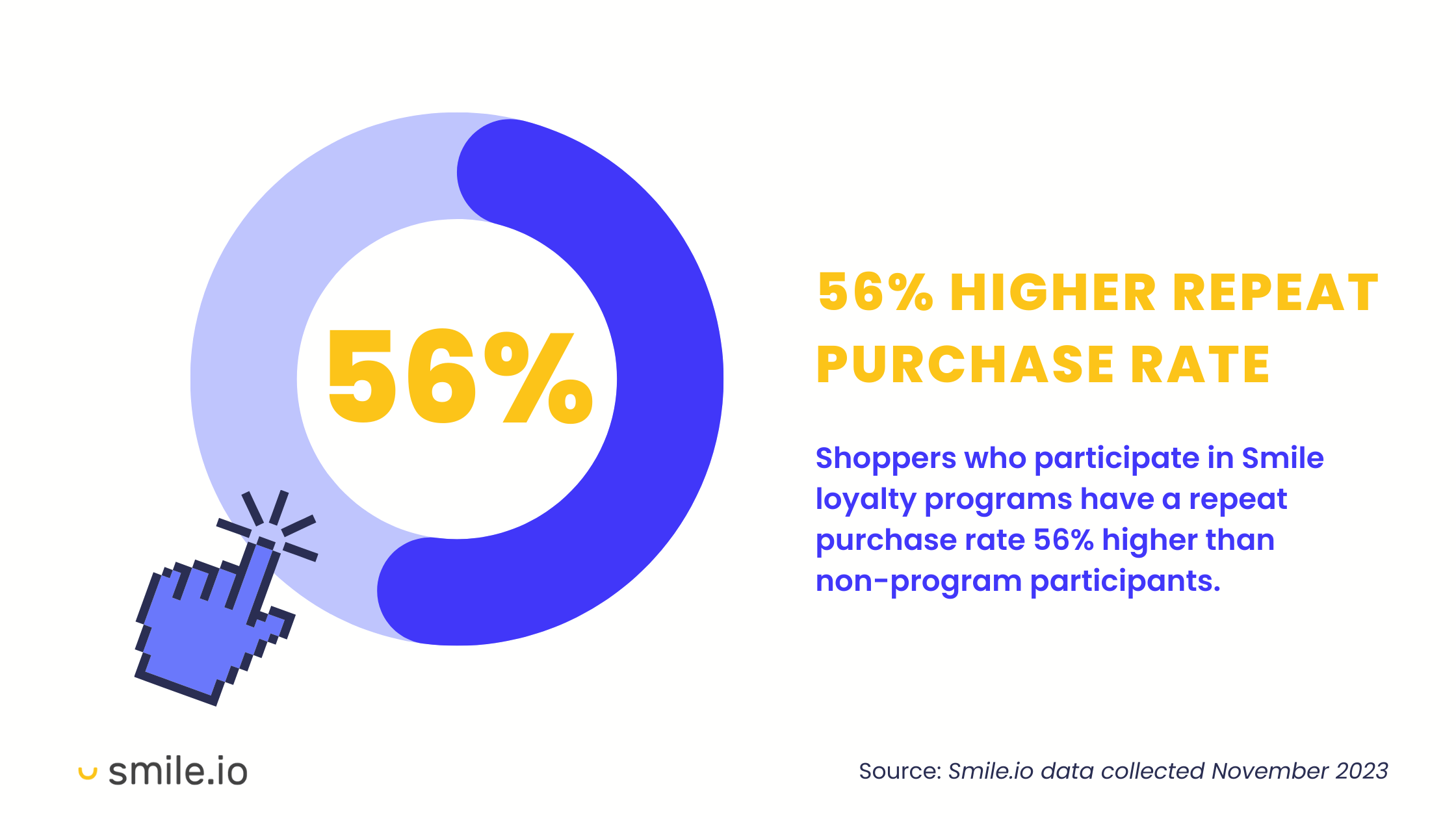
Last (and arguably, most important) is repeat purchase rate. At the beginning of this post, we mentioned that the entire goal of your loyalty program is to create repeat customers. Increasing the likelihood of a repeat purchase is what it all comes down to.
When your program is running effectively, customers should be motivated to continuously make purchases to earn their next reward or save up for a big reward. But this only works if your rewards are motivating for your customers.
Monitor your program analytics like redemption rate and the breakdown of what rewards customers are redeeming most often. This will give you valuable feedback on how effective your rewards are. And don’t underestimate the power of simply asking your customers for feedback. An Instagram poll can go a long way.
Why should you care?
This is how you know if your program is working. Are customers returning for repeat purchases? If so, they’ll be more likely to shop with you again, they’re easier to sell to, they spend more on each purchase, they spend more at key times, and they’ll be more likely to be brand advocates for you.

What this means for brands and loyalty programs
The TL;DR is that loyalty programs — especially ones powered by Smile.io — do, in fact, work. The contrarian take that disparages points programs is nothing more than click or engagement bait
It's easy to cherry-pick small subsets of data to show the results you want, but when you look at all the data laid out, you can’t argue with the results.
Smile loyalty programs:
- Increase Average Order Value
- Increase how often shoppers return
- Decrease the time between purchases
- Increase how likely they are to return

